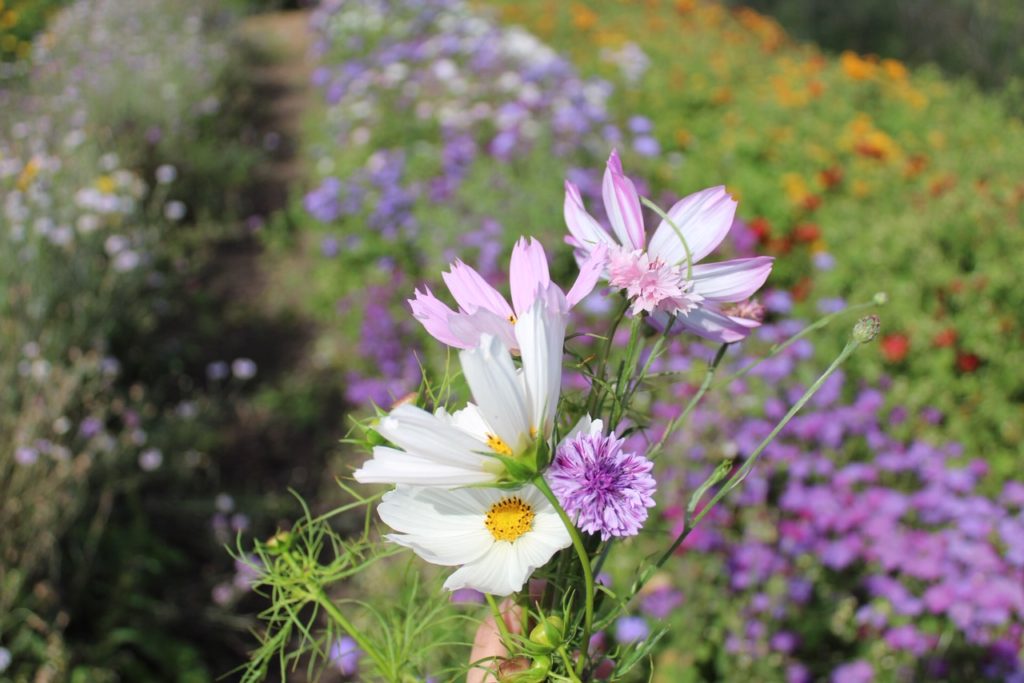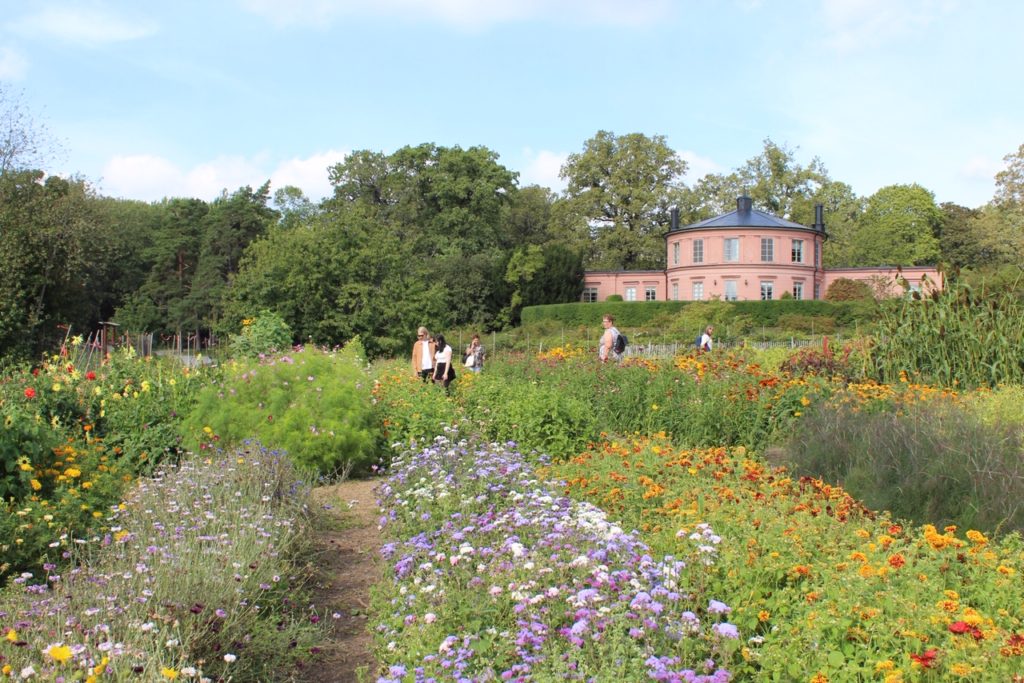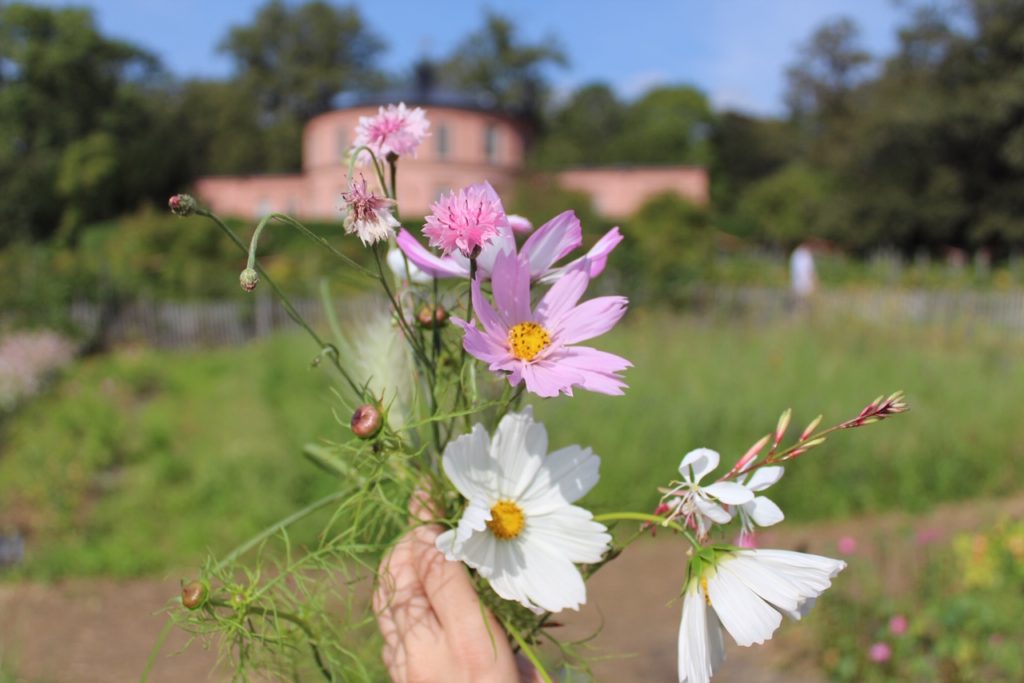A beautiful bouquet brings colour, beauty and life to your home. But from an environmental perspective, it often also brings a damaging carbon footprint. So what can we consider for a more conscious bouquet?
One aspect of this modern day green wave that we’re experiencing is that we’re increasingly embracing nature and all it’s got to offer. From an ecological perspective, there’s a growing interest in gardening and farming. And having flowers and plants in your home is a huge trend all over Instagram. But as with most trends, there are questions and issues around this, especially when it comes to the exotic fresh flower bouquet.
Its origin is key. Because here in the northern hemisphere, most flowers on sale in flower shops are imported and have been flown here by plane to avoid them dying en route.
So can we consider our mindset and our urge to follow this trend? When wanting to buy the trendy flowers that we see on Instagram, are we considering where they come from or how far they need to travel to reach our home?
What can we do?
As we’re becoming increasingly conscious of buying locally produced food that’s in season, we should be thinking the same when it comes to flowers. Learning to appreciate the flowers that are in season and wait/long for the ones that aren’t.

Conscious consumption is first and foremost about the consciousness. Being mindful of why we’re buying something and what we buy. The same goes for flowers. Why do we want them? How often? Can we increase the long-lasting potted plants we buy, rather than the fresh flowers? And the ones we do buy, can we dry them to make them last longer?
In a conscious shopping utopia, regulations and shops have made it easy for us to buy things that are better for the planet, but until then we have to do more of the work ourselves. But a good start it to ask in the shop.
What flowers are in season? Where do they come from? Have they been grown locally?
Are they organic? Fair trade? What’s the carbon footprint if they come from further away?
These are all things to be conscious of. And so is the fact that seasonal flowers are also important from a carbon perspective because of the energy that might be needed to heat up a green house to grow flowers out of season. So even if they’re local – what energy was needed to grow them?
Trying to find organic, locally grown flowers in season is probably our best bet. Or maybe even heading out of the city every now and then to find wild flowers. Or of course, grow your own.
Growing your own – an unachievable trend?
The trend of growing your own flowers is increasing at the same time as we’re becoming increasingly conscious of the issues of buying flowers that have been flown in from the other side of the world. But when the trend – and what we should aspire towards to be conscious, sustainable people – is having our own garden where we can grow our own flowers – how realistic is it?

Not everyone can afford a house with a garden, or a summer house with a garden for that matter. Many of us live in small city flats, with a small balcony if we’re lucky. But buying flowers in the shop is, in the sustainability world, seen as ‘the bad thing’, and growing your own is ‘the good thing’.
I often argue that when ‘doing the right thing’ and being eco-friendly becomes something exclusive or hard to achieve, making it mainstream becomes even harder. It can’t be too black and white. Finding a middle ground is in most cases more realistic, and for us who want to be able to enjoy a nice bouquet every now and then, it’s probably a necessity.
A flower pick n’ mix
One of my favourite spots in Stockholm is the Rosendal Trädgård – a garden centre where a gorgeous garden café serves organic, often homegrown food. You can also buy their own produce in their small shop and at this time of the year, you can buy their homegrown flowers.
You borrow a pair of scissors, head out in the garden and pick whatever flowers you want. You then pay by weight and can take your own bouquet home with you. Such a great concept! I tried it out on the weekend, picked out a random mix of summer flowers and was not disappointed.

Is there something similar in your city? For your next bouquet maybe check with local garden centres if they grow their own, or maybe even check with local allotments if there’s anyone who’s willing to give or sell some flowers to you. And next time you’re in a flower shop, use your consumer power by asking them about organic, locally grown flowers that are in season. For your next bouquet to be a conscious one.

